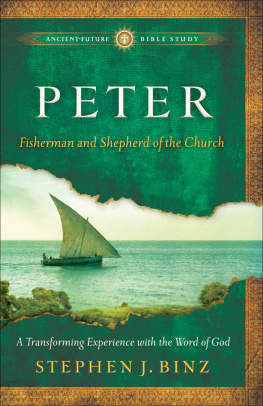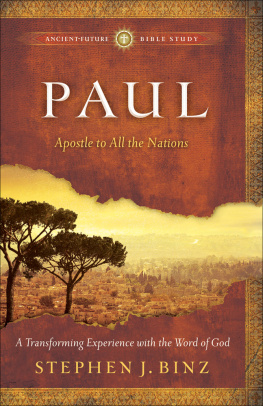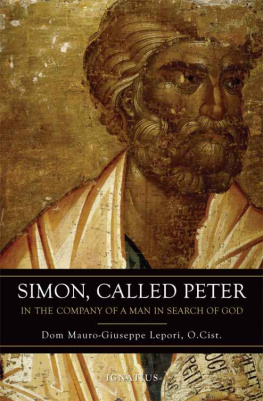Theologians describe two different paths to understanding Jesus Christ. The first is called Christology from above, which begins with Jesus status as the divine Son of God and then descends to comprehend his human life and ministry in Galilee. The second is Christology from below, which starts with Jesus the Galilean, in the context of his everyday life and teaching, and then ascends to explore his divine titles and saving power.
One might say that my path in coming to understand Peter has been a kind of Petrology from above. I first grew to know Peter through his glorious legacy in the city of Rome. His martyrdom and its commemoration pervades the architecture of the most famous church in the world. Only after experiencing Peter as portrayed in the baroque masterworks of the dome and altar of St. Peters Basilica did I get to know the man of Galilee.
Still later, by coming to know Peter, the fisherman and disciple of Jesus, I began to understand the reasons for the splendors of Christian Rome. Encountering this man of Galilee through the places where he lived with Jesus enabled me to get to know him in a personal and human way. And coming to meet Peter in this way led me to deeper discipleship and a more personal experience of Jesus. I think it will be the same for you. For anyone seeking to walk with Jesus Christ, Peter is like an older brother and a guiding teacher.
Walking with Peter to Jesus
The narrated life of Peter in the New Testament is one of the Bibles most fascinating and inspiring portraits. He was an ordinary Jewish fisherman, but through his experiences with Jesus of Nazareth, he grew into one of the key figures in the history of the world. His richly developed and complex personality in the biblical narratives makes him attractive and accessible to every reader.
In the four Gospels, Peter is clearly the most prominent of Jesus disciples. He appears in the accounts more frequently than all the other disciples combined. Peter receives special attention in many situations during the life of Jesus, and he often functions as the spokesperson for the other disciples. He is the first called by Jesus and made a fisher of men and women, and in every list of Jesus twelve disciples, Peters name appears first. He is the first to profess genuine faith in Jesus, always the first to answer Jesus, and the first apostle that Paul names as witness to Jesus resurrection.
In the life of the early church, Peter exercises a clear primacy. He preaches the first sermon at Pentecost, converting thousands to belief in Christ. He performs the first recorded miracle in the apostolic church, healing a crippled beggar in the name of Christ. And he is the first to receive a Gentile convert into the community, opening the mission of the church to all people.
Yet, despite this distinctive role of Peter among the disciples, he seems to be a mass of contradictions. He confesses that Jesus is the Son of God, then refuses to accept Jesus mission as the suffering Messiah. Jesus appoints him as the rock foundation of his church, but Peter shows himself a stumbling stone on Jesus path to the cross. Peter bravely walks on the water at the direction of Jesus but then fearfully begins to sink.
Peter is bold and cowardly, impulsive and fearful, filled with bravado yet weak, flawed, and sinful. In reading the Gospels, we see a wide range of responses, from foolish bluster to passionate commitment. When Jesus appears in transfigured glory on the mountain, Peter reverently offers to erect tents, but when Jesus asks him to watch with him in his grief in Gethsemane, Peter promptly falls asleep. He promises to lay down his life for Jesus, but that same night he denies three times that he ever knew him. In the early days of the church, Peter risks his reputation to share the gospel with the Gentiles, but later in Antioch he refuses to eat with them and must be reprimanded for this by Paul.
I have grown to love Peter because he is such a thoroughly human character. He certainly has many strengths, but time and again he displays his weaknesses. He frequently demonstrates genuine emotions. We witness him weeping in anguish after denying his master. Then he also shows himself as a deliriously happy fisherman when he jumps into the water and swims as fast as he can to meet his risen Lord on the shore.
Peter never tries to minimize, justify, or rationalize his own mistakes, but he honestly confesses his sins and failings. Although he often fails to live up to his calling, because of his humility and repentance he learns and grows in discipleship through his failures. Thats what I admire about him. I too find my life to be a mass of contradictions. And often I try to justify my failures, to play down my blunders. But Peter, like an older brother, points out the way to personal growth.
Most of all, the Gospel writers demonstrate that Peters own merit and accomplishments do not create his heroic character. Rather, Peter is defined in Christian history by what the love of Jesus wrought in him. Peter challenges me, and he can challenge you, to confront the truth of our own brokenness so that Gods grace can fashion us into the disciples Jesus calls us to be.
I will always remember my first view of St. Peters Basilica. I boarded the city bus from the western outskirts of Rome where I was living and disembarked at a stop near the church. I turned the corner and there it was, reaching out its colonnaded arms to welcome and embrace me. I walked up the Via della Conciliazione, the broad avenue leading from the Tiber River to Piazza San Pietro, the famous faade growing ever larger as I approached. I was checking off the premier item on my bucket list before I was twenty years old.
I was a college sophomore, spending the spring semester of 1975 on the Rome campus of the University of Dallas. UD is a Catholic liberal arts institution known for its core curriculum of great books of literature and philosophy. That semester we read Virgils Aeneid, Dantes Divine Comedy, and Augustines Confessions, among other foundational works of classical and Christian culture. I had taken two semesters of History of Art and Architecture my freshman year, and now I was ready to see these works firsthand. We had class three or four days a week, then every weekend and on our long spring break wed take our backpack, Eurail pass, and Europe on $10 a Day guidebook to explore the world.
But my first stop, the morning after we arrived in Rome, was the visible center of my Catholic faith. No other church has such a magnificent approach. As an eager nineteen-year-old, I first noticed the tall obelisk dominating the outdoor plaza. I discovered that the massive structure, made from a single block of red granite and weighing 330 tons, was brought from Egypt by the Roman emperor to be placed in the nearby Circus of Nero. It was here in this circus that Peter the Apostle was tortured and died as a martyr, somewhere between AD 64 and 68. Peter certainly viewed this obelisk during the final minutes of his life; it formed one of his last conscious impressions before his agonizing death.














